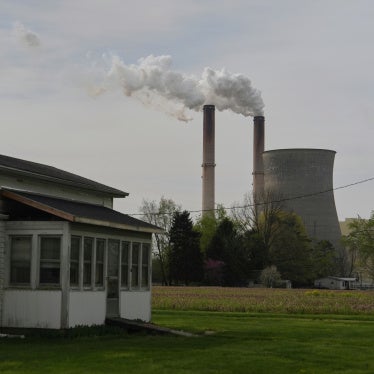New statistics compiled by a US Justice Department agency reveal that the rape and sexual abuse of prisoners by other prisoners and staff plague prisons nationwide, Human Rights Watch said today.
According to the report, released today by the Bureau of Justice Statistics (BJS), “Sexual Victimization in State and Federal Prisons Reported by Inmates, 2007,” 4.5 percent of the state and federal prisoners surveyed reported sexual victimization in the past 12 months. Given a national prison population of 1,570,861, the BJS findings suggest that in one year alone more than 70,000 prisoners were sexually abused.
“When nearly one in 20 prisoners reports being raped or sexually abused behind bars, it is clear that prison authorities are not doing enough to prevent these serious crimes,” said Jamie Fellner, senior counsel of the US Program at Human Rights Watch.
“Prison rape is not inevitable, but it is all too predictable when prison authorities fail to enforce a zero-tolerance policy on sexual abuse,” noted Fellner, who also serves as a commissioner on the National Prison Rape Elimination Commission, created by Congress in 2003 as part of the National Prison Rape Elimination Act.
Some 2.1 percent of the inmates surveyed by the BJS reported sexual abuse involving another inmate. In its 2001 landmark report, “No Escape: Male Rape in US Prisons,” Human Rights Watch documented vicious and brutally violent male rapes in prison as well as other more common, less overtly violent forms of coerced sex. Certain prisoners are more vulnerable to rape and are targeted for sexual exploitation – especially prisoners who are young, physically small or weak, gay, first offenders, or have been convicted of a sexual offense against a minor.
Human Rights Watch’s research revealed that sexual abuse by other inmates often occurred because staff failed to adequately supervise inmates or respond appropriately to complaints of unwanted sexual activity. In some prisons, staff tacitly as well as explicitly condoned inmate-on-inmate abuse.
According to the BJS, five of the 10 prison facilities with the highest reported rates of inmate-on-inmate victimization are in Texas, with reported prevalence ranging from 3.3 to 8.8 percent. Texas has a crowded state prison system with a long and notorious history of prison violence, marked by staff indifference to and complicity with abuse, as documented in “No Escape.”
“Texas officials insist they have put effective anti-rape strategies in place, but the Justice Department figures show that they still have a long way to go,” Fellner said. “Prison authorities in Texas must ensure that sexual abuse is not part of an inmate’s sentence.”
Nationwide, a higher percentage of inmates, 2.9 percent, reported staff sexual misconduct than inmate-on-inmate abuse. A prison in Nebraska had the highest reported rate of staff-on-inmate sexual abuse, 12.2 percent. The BJS survey asked inmates to indicate whether their sexual activity with staff was “willing” or “unwilling.” In the prison context, however, this distinction is meaningless.
As Human Rights Watch documented in its 1996 report, “All Too Familiar: Sexual Abuse of Women in State Prisons,” all sexual interaction between staff and inmates is inherently coercive because of the inherent disparity in power between staff and inmates, and thus can never be considered “voluntary” on the part of the inmates. Human Rights Watch urges the BJS to eliminate reference to inmate willingness with regard to staff sexual misconduct in future reports.
“We welcome the careful efforts by BJS to statistically capture sexual abuse in prisons,” said Fellner. “We look forward to their efforts to document sexual victimization in other facilities, including jails and youth detention centers.”








